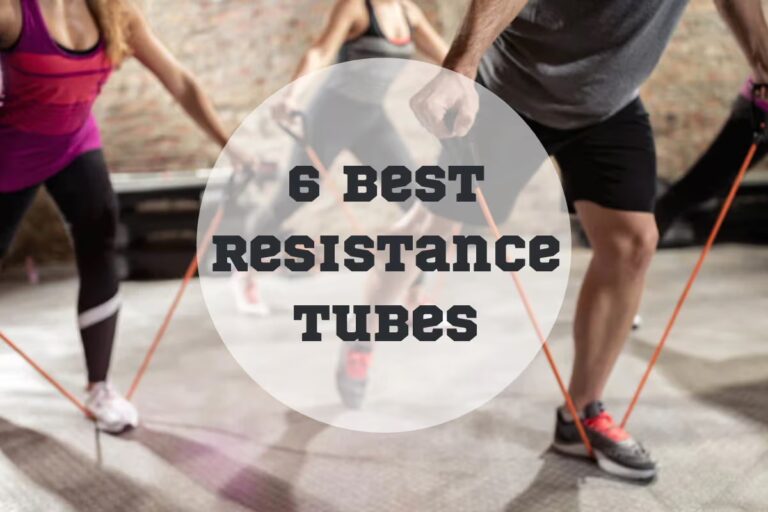8 Best Treadmill Running Shoes in 2025
Tired of your old running shoes and looking for a new pair? Here are the best treadmill running shoes to have.
Running on a treadmill is many people’s method to stay in shape. However, a surprising number of people run in inadequate footwear, making workouts less comfortable and more energy demanding as well as increasing the likelihood of foot and leg injuries.
Stick around to learn the difference between shoes for treadmill running and regular workout shoes, but first, a rundown of our top picks:
In a hurry?
In a hurry and can’t keep reading? How about you check out the Reebok Floatride Energy 5 Shoes.
The Reebok Floatride series is a top choice on many treadmill running shoes reviews for good reason. These are the sort of walking and running sneakers you can take both to the gym and outside with no issue, and they won’t break the bank either.
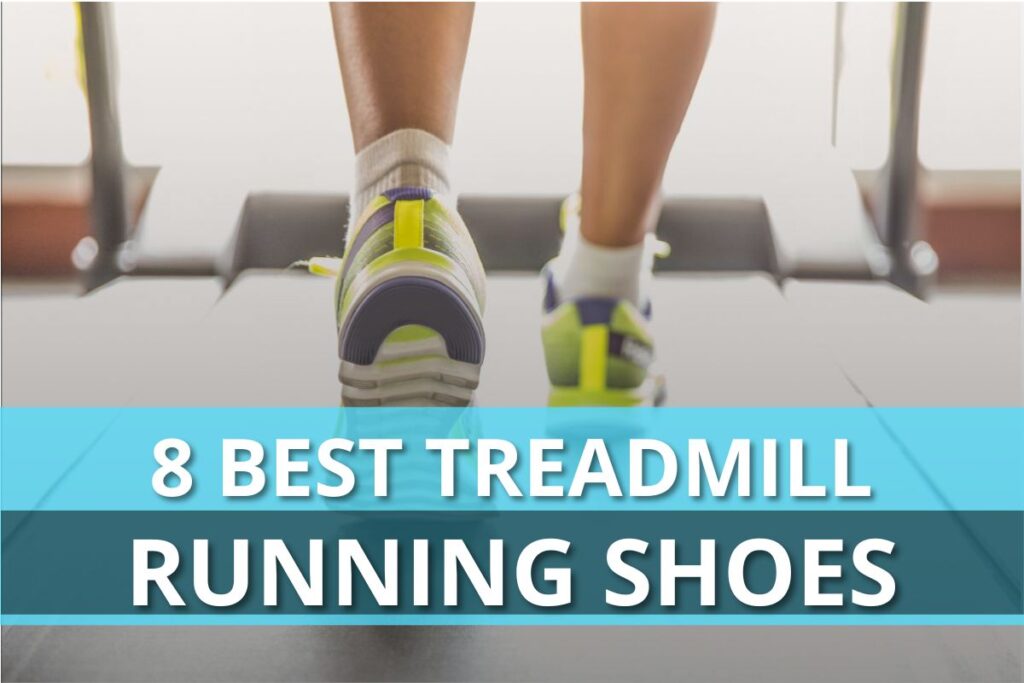
Top 8 Best Treadmill Running Shoes Reviewed
- Reebok Floatride Energy 5 Shoes – Top Pick
- NOBULL Mesh Runner – Runner-Up
- HOKA Women’s Clifton 9 – Best Women’s Lightweight
- HOKA Mach 5 – Best Cushioning
- TYR SR-1 Tempo Runner – Most Lightweight
- Under Armour Flow Velociti Elite Running Shoes (Unisex) – Premium Pick
- Under Armour Charged Assert 10 – Budget Pick
- WHITIN Men’s Minimalist Trail Runner – Best Minimalist Shoes
| Shoe | Total | Comfort | Cushioning | Breathability | Flexibility | Support | Responsiveness | Material Quality |
|---|---|---|---|---|---|---|---|---|
| Reebok | 69 | 10 | 10 | 10 | 9.5 | 10 | 10 | 9.5 |
| NOBULL | 68.5 | 10 | 10 | 10 | 9 | 9.5 | 10 | 10 |
| HOKA Women’s | 68 | 10 | 10 | 10 | 9 | 9.5 | 9.5 | 10 |
| HOKA Mach 5 | 67.5 | 10 | 10 | 9 | 9 | 10 | 10 | 9.5 |
| TYR | 67 | 10 | 9 | 9.5 | 9 | 10 | 10 | 9.5 |
| Under Armour Flow | 65.5 | 9.5 | 9 | 10 | 10 | 9 | 9.5 | 9.5 |
| Under Armour Charged | 65 | 9 | 9 | 10 | 9 | 10 | 9 | 9 |
| WHITIN | 63.5 | 9.5 | 8 | 10 | 10 | 9 | 8 | 9 |
1. Reebok Floatride Energy 5 Shoes
Reebok has always had an interesting position in the running shoe market: arguably not as popular a choice as Nike or Adidas but also not as expensive while maintaining a similar level of quality and prestige.
The Reebok Floatride series is a top choice on many treadmill running shoes reviews for good reason. These are the sort of walking and running sneakers you can take both to the gym and outside with no issue, and they won’t break the bank either.
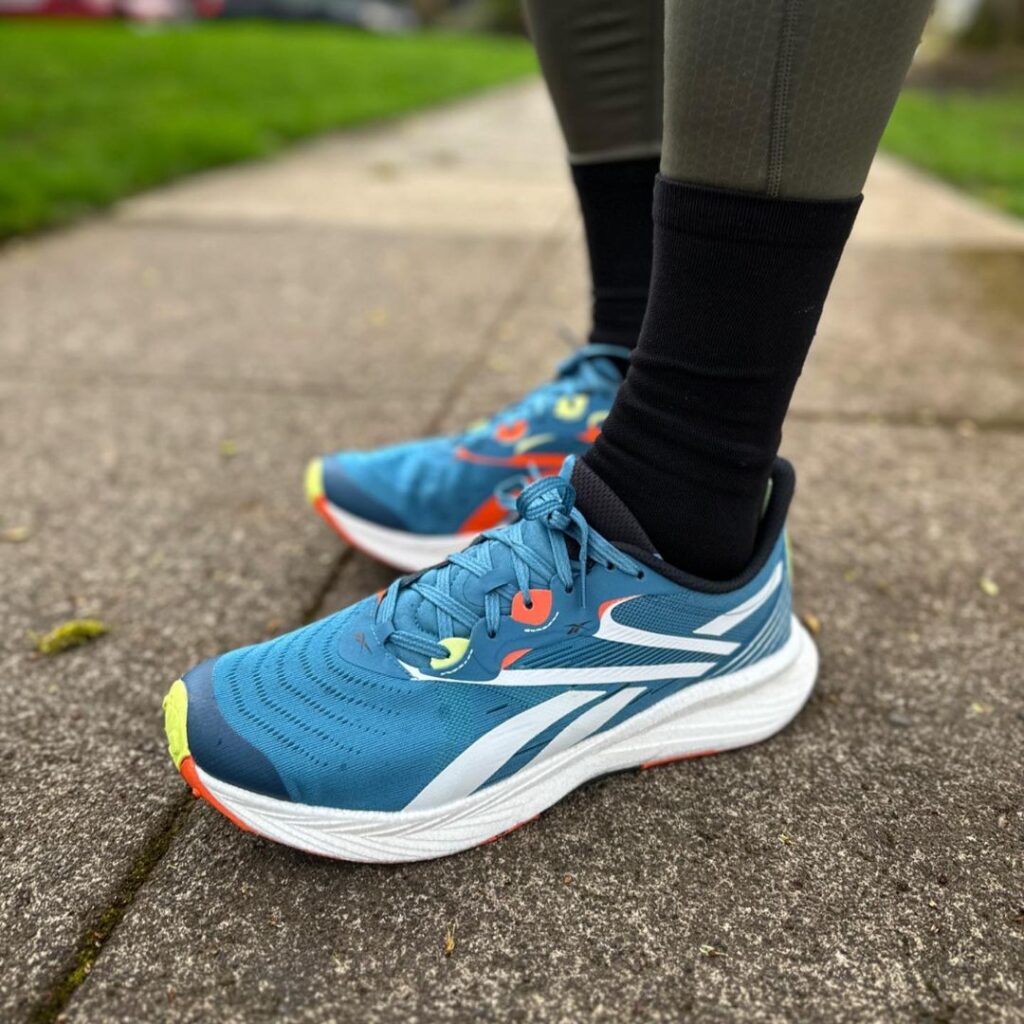
The Reebok Floatride Energy 5 is a shoe built for running. Using Reebok’s original Floatride Energy Foam, the shoes ensure a responsive and cushioned bounceback with each strike. The rubber outsole is designed for all surfaces, accommodating both outdoor and indoor runs. Plus, the shoe is built sustainably, with at least 30% of every Floatride Energy 5 crafted from recycled or repurposed materials.
Thanks to the torsional footplate (X-plate) located in the midsole, it adds a rigidity and touch of weight to the right place to enhance stability. Despite this, the shoe remains very light at just 266g or roughly 9.4OZ. Both the collar and tongue are padded for improved comfort and fit.
The inclusion of a suction cup at the bottom reduces weight and increases stickiness. On top of that, the Floatride Energy 5 boasts a competitive price, making it more attractive than similar-quality shoes from other brands.
The Reebok Floatride series is a top choice on many treadmill running shoes reviews for good reason. These are the sort of walking and running sneakers you can take both to the gym and outside with no issue, and they won’t break the bank either.
Positives:
Could be better:
2. NOBULL Mesh Runner
Nobull entered the world of training shoes looking to make the best cross-training sneaker. After successfully claiming that market, it was time to expand into more specific training routines. The Nobull Mesh Runner is a modern spin on your classic indoor running shoes, with cutting-edge materials and innovative features.
The Nobull Mesh Runner lives up to its name, featuring a highly breathable layered mesh construction. The inner layer incorporates small breathability perforations, while the outer layer acts as a supportive net, creating an effective combination of optimal ventilation and support. Adding to that is the perforated microfiber tongue, which enhances breathability and keeps the shoe lightweight.
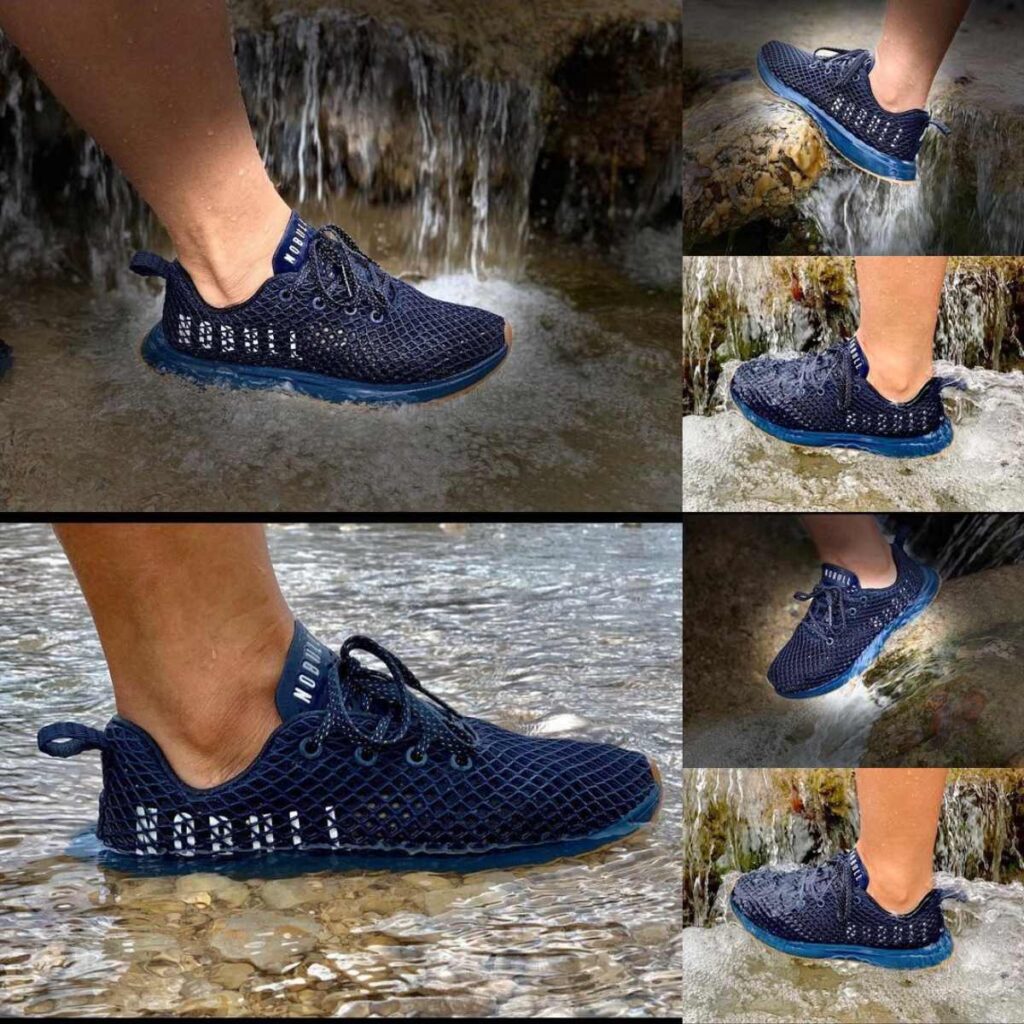
Inside the midsole, the shoe boasts a high-rebound Phylon, an advanced EVA foam that delivers superior bounce for high energy return on each foot strike. The rubber outsole, equipped with lug patterns, ensures versatility for both indoor and outdoor runs, providing traction and stability. The molded anatomic sockliner is also removable, allowing the option to insert your own orthopedic insert if needed.
The shoes are comfortable to put on and off thanks to the convenient heel pull loop and the collar padding that offers additional support below the ankle. Nobull’s Mesh Runner also offers a large size selection and a wide range of traditional and unique color designs.
The shoes are comfortable to put on and off thanks to the convenient heel pull loop and the collar padding that offers additional support below the ankle.
Positives:
Could be better:
3. HOKA Women’s Clifton 9
The HOKA Women’s Clifton 9 offers a great blend of style and functionality for a reasonable price. All things considered, these are the best women's running shoes for treadmill workouts.
The HOKA Clifton 9 stands out as an excellent everyday running shoe for women. The highly perforated and breathable upper mesh ensures comfort throughout your run. With HOKA's original MetaRocker™ technology in the midsole, you experience a curved landing that propels you forward, ideal for a swift run. Weighing just 7.3 ounces for a women's size 9, these shoes give lightweight options a run for their money.
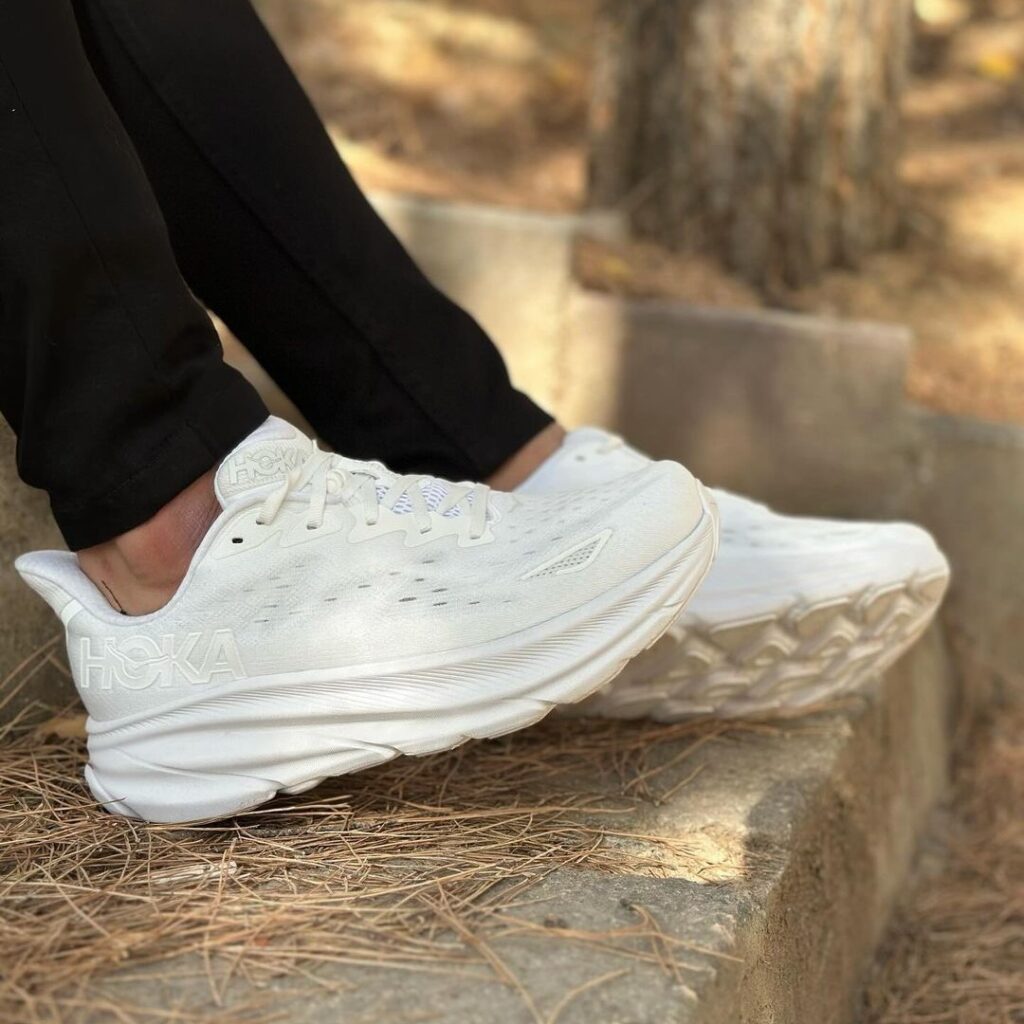
For outdoor enthusiasts, an upgrade to the Clifton 9 with a Gore-Tex (GTX) invisible-fit upper is available for a slight price increase. This specialized material renders the shoes waterproof, making them suitable for trekking, hiking, or running in the rain.
The Clifton 9 offers a variety of appealing style choices, including four staple options and various seasonal colors that change throughout the year. Once you run through a pair, it’s very easy to get another with a refreshed look, which may make you fall in love with them again.
The HOKA Clifton 9 stands out as an excellent everyday running shoe for women. The highly perforated and breathable upper mesh ensures comfort throughout your run.
Positives:
Could be better:
4. HOKA Mach 5
The HOKA Mach 5 is designed for high-impact running, featuring specialized cushioning thanks to HOKA's original ProFly+™ midsole — a stacked dual-layer foam that combines firm bottom propulsion with soft top foam cushioning for a balanced and responsive ride.
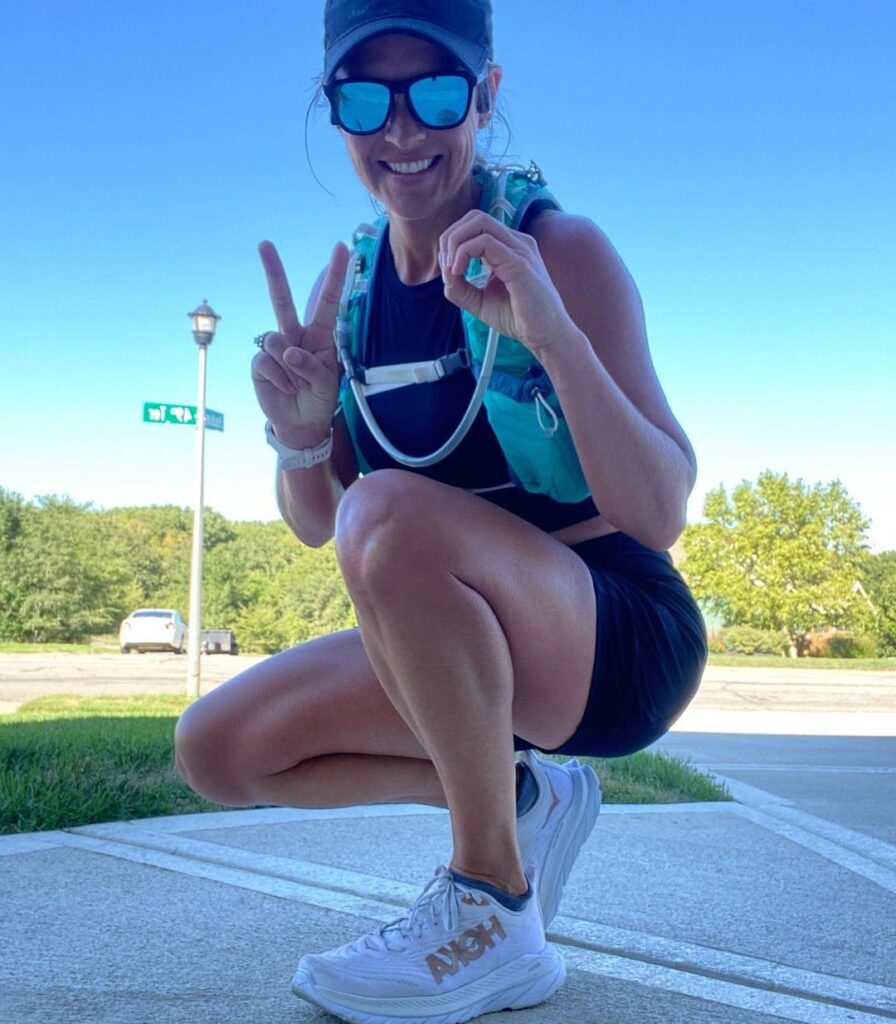
Sustainably made, The Mach 5 shoe’s construction includes a 52% recycled polyester upper mesh, laces made of 70% recycled nylon and 30% recycled polyester, and a 100% recycled polyester sockliner top cloth, plus the shoe is vegan-friendly. The molded EVA sockliner ensures comfort, while the extended heel collar adds ankle support. The gusseted tongue effectively keeps debris out, though it may require more unlacing for removal.
The HOKA Mach 5 is designed for high-impact running, featuring specialized cushioning thanks to HOKA's original ProFly+™ midsole — a stacked dual-layer foam that combines firm bottom propulsion with soft top foam cushioning for a balanced and responsive ride.
Positives:
Could be better:
5. TYR SR-1 Tempo Runner
TYR is a lesser-known brand outside of running and weightlifting, which is surprising considering their 40-year tenure. The SR-1 Tempo Runner is arguably their most successful attempt at a mainstream running shoe.
The TYR SR-1 Tempo Runner is another great lightweight choice, constructed with a Monomesh upper weighing only 7.6 ounces — only 0.1 ounces more than the UA Flow Velociti, which are almost double the price. Monomesh is also highly perforated and breathable.
Tempo Runners use TYR’s original NRG+ foam midsole to offer great responsiveness and bounceback. The design includes beveled heel edges for smooth landings, an effective grip with a suction cup-like hole, and a Flex Groove outsole for multi-directional traction.
The shoe is available in a unisex design with various sizes, although color choices are limited to four, which may not appeal to everyone. Practical features of the TYR SR-1 include a gusseted tongue, closed lacing, and a molded sockliner.
The TYR SR-1 Tempo Runner is another great lightweight choice, constructed with a Monomesh upper weighing only 7.6 ounces. Monomesh is also highly perforated and breathable.
Positives:
Could be better:
6. Under Armour Flow Velociti Elite Running Shoes (Unisex)
If you’re looking for a pair of premium-quality shoes for treadmill running, look no further than the Under Armour Flow Velociti Elite. It’s a bit harder to recommend to casual or recreational runners due to the high price, but serious runners who understand the intricacies of the sport will be amazed at what this shoe can do.
The Flow Velociti Elite by Under Armour is a revolutionary running shoe. You can feel the difference just by looking at it. The upper uses UA’s original Warp™ 2.0 material. It’s highly stretchable and adapts seamlessly to any foot shape. It’s incredibly lightweight and thin, so much that it’s transparent in certain lighting conditions. On top of that, it allows for superior airflow.
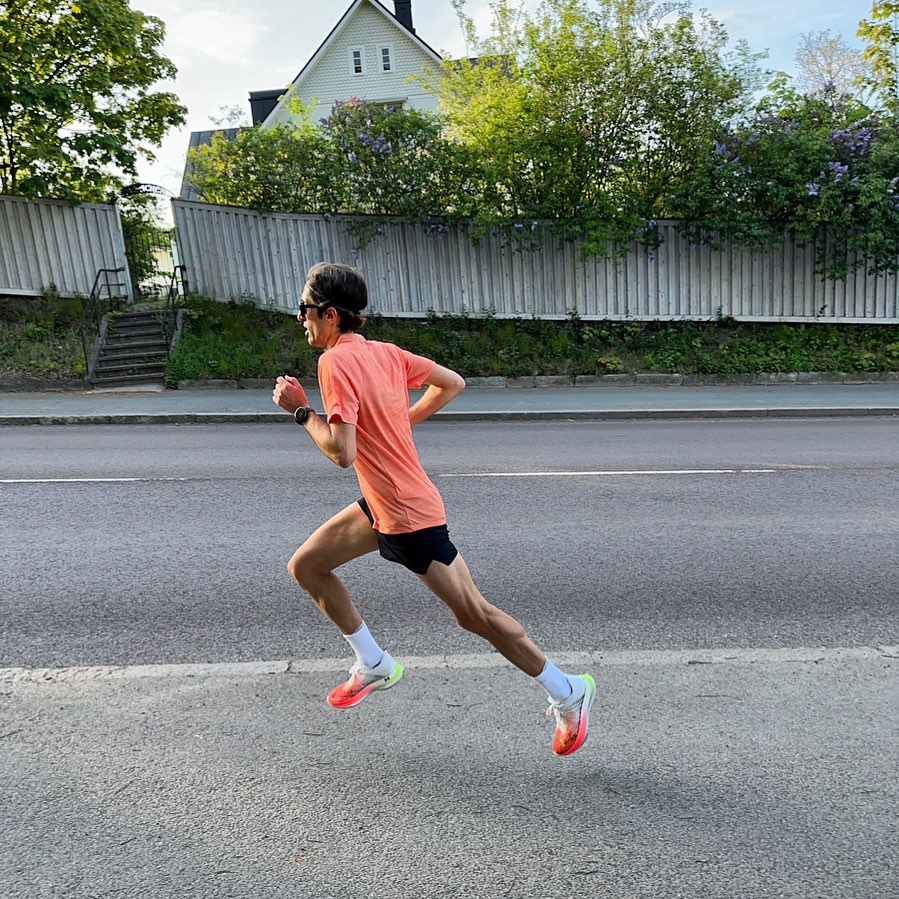
The sole is made from a single piece of UA's original Flow material. It’s highly resistant to traction, completely removing the need for a rubber outsole, thus reducing the shoe's weight even further. The entire shoe is just 7.5 oz., barely over 200 grams, making it one of if not the lightest shoes on the market.
The midsole is equipped with a full-length carbon fiber plate with proprietary angles, ensuring explosive return on each strike. Thanks to the TPE sockliner, each strike is resilient and bouncy, while the shoe remains barefoot-friendly for those favoring a more natural running experience. The shoe is unisex in design and offers a wide range of sizes, though color choices are currently limited.
The Flow Velociti Elite by Under Armour is a revolutionary running shoe. You can feel the difference just by looking at it. The upper uses UA’s original Warp™ 2.0 material. It’s highly stretchable and adapts seamlessly to any foot shape.
Positives:
Could be better:
7. Under Armour Charged Assert 10
The Under Armour Charged series is many people’s favorite running shoe to buy on a limited budget. If you go to a public gym, chances are more than a few people you meet there wear or have worn them.
The midsole features UA's original Charged Cushioning®, a material consistent across various models. It proves highly responsive and durable, with the latter quality notably standing out after extended wear. The bottom features various grooves and patterns that make every step grippy and also anatomical.
Both the tongue and upper of the shoe prioritize breathability, ensuring that even the longest run feels like a breeze. Thanks to the inside EVA sockliner, every step is made softer and more comfortable. The 10mm heel-to-toe drop is on the higher side, though these are large-sized (4E) shoes.
The Assert 10 addresses a significant concern observed in previous Charged series shoes, specifically the tendency to tear on the toe caps. The Assert 10 rectifies this issue with reinforced toe caps. The pull tab on the back of the heel makes putting these on and off easy.
As stated on their website, the Charged Assert 10 holds the title of UA's bestseller — to no surprise to any of us who tried them. These are top-notch running shoes available at half the price of your typical Nikes or Reeboks.
The midsole features UA's original Charged Cushioning®, a material consistent across various models. It proves highly responsive and durable, with the latter quality notably standing out after extended wear.
Positives:
Could be better:
8. WHITIN Men's Minimalist Trail Runner
Lastly, something a little different. If you want to come as close to barefoot running without exposing your skin (or running in socks), you should get a pair of minimalist shoes.
Designed to bring you as close to the ground as possible, these shoes boast no heel-to-toe drop or extra cushioning for added support. While this minimalistic design may not appeal to everyone, enthusiasts of barefoot walking and running will find them particularly enjoyable. Apart from barefoot-esque running, these are excellent for an outside walk.

They’re meant to be worn sockless, and the sockliner is removable as well. Taking care of them is also very easy since they’re machine washable. With a fairly low price and a large selection of colors, these are quite an attractive pickup.
Designed to bring you as close to the ground as possible, these shoes boast no heel-to-toe drop or extra cushioning for added support. Apart from barefoot-esque running, these are excellent for an outside walk.
Positives:
Could be better:
Do Treadmill Running Shoes Really Matter?
People who are new to running or do it casually and irregularly might hesitate to spend money on good running shoes. They often wonder if these shoes really make a big difference or if they're just a marketing trick to get you to buy more pairs. To clear up any doubts, let's look at how picking the right shoes for treadmill running can give your workout an advantage:
✅ Better Ground Contact
Running shoes are specifically designed to increase the touchdown surface area of your foot with the ground, making each landing more stable, distributing impact forces more evenly, and minimizing stress on joints during each stride.
A study assessing the effects of cushioned running shoes on ground impact showed that they greatly increased contact surface area (28% for low-arch and 68% for high-arch feet) and decreased foot pressure by as much as 30%.
Tips From the Champ
To check your foot arch, soak your feet in water and step on a piece of paper. Step off and check the imprint on the midfoot: if it’s mildly visible, you have a neutral (normal arch). If it’s empty or nearly so, you might have a case of high arches.
Olympic Weightlifting Champion
✅ Better Energy Expenditure
Professional treadmill running shoes are designed to give you the best return on energy expenditure when you run, also known as running economy. In a nutshell, a better running economy theoretically means a runner can cover more distances and run faster while consuming less oxygen.
One study examining the impact of different footwear features on running showed that shoes with lower mass, effective cushioning systems, and less bending from heel to toe (features typical on running footwear) provided better running economy than shoes that didn’t have such features.
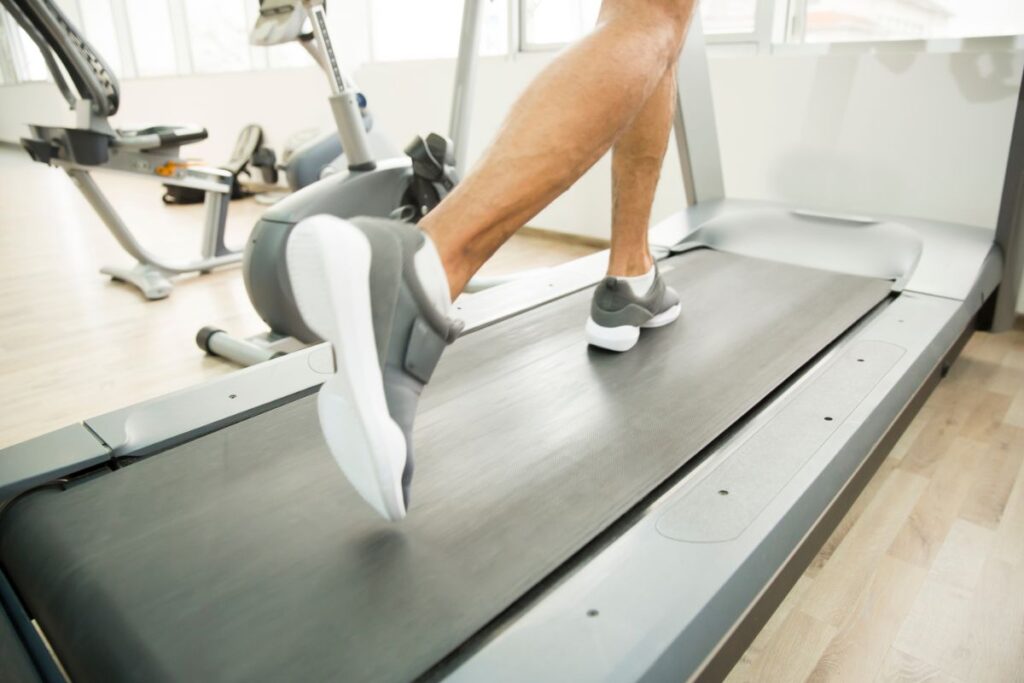
Another study looking at highly cushioned running shoes found that they decreased oxygen consumption & increased running speed corresponding to 3 mM blood lactate, even with the presence of muscle damage.
✅ Faster Runs
Leading brands like Reebok & Under Armour majorly invest in research and development to shave off quarters of a second from their athletes to give them a better chance at winning. One of the ways they do this is by finding new ways to reduce shoe mass, including using lighter materials.
A study looking at the effects of footwear type on running performance confirmed a positive association between shoe mass and the metabolic cost of running. If your goal is a faster run on your upcoming marathon or simply higher calorie consumption through more energy expenditure, light running shoes will make a difference.
✅ More Comfortable
Running shoes are specifically designed for comfort and support, making walking and running feel better than other footwear. This is achieved through extra cushioning, lightweight builds, breathable materials, etc. Designed for user comfort, running shoes can enhance the overall workout experience, making exercise more enjoyable and efficient, thus encouraging you to stay active.
Treadmill Runner Shoes vs. Outdoor Running Shoes
Many people assume that a running shoe is just a running shoe, regardless of whether you use it indoors or outdoors. Well, this isn’t exactly the case. While it’s true that your commercial pair of running shoes can be used to hit both the treadmill and running track, the fact of the matter is these are flat, clean surfaces designed for runs.
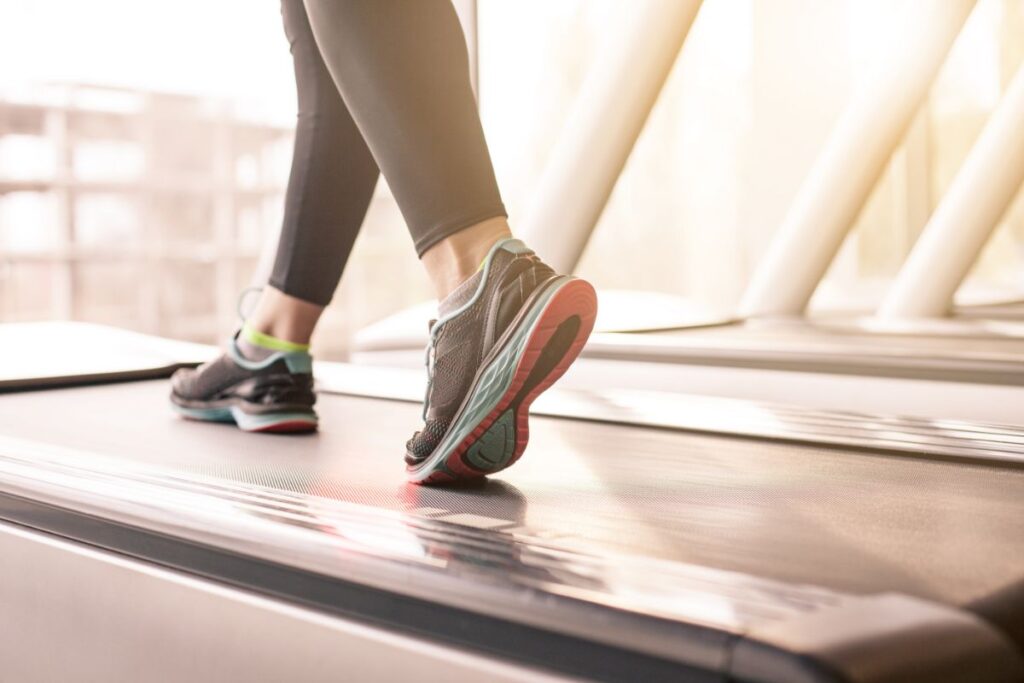
However, outdoor running is a completely different beast. Shoes designed for outdoor runs have to accommodate many more scenarios, including uneven surfaces, different terrain, weather conditions, dirt & debris all in a single run. Here’s a table comparison to better explain some key differences:
| Feature | Treadmill Running Shoes | Outdoor Running Shoes |
|---|---|---|
| Design | Minimalist | Robust |
| Cushioning | Moderate | Enhanced |
| Upper Material | Textile mesh | Layered fabrics |
| Outsole pattern | Smooth, evened out | Aggressive, deeper grooves |
| Weight | Lighter | Heavier |
| Durability | Low to medium | High |
| Breathability | Enhanced | Lower, balanced breathability & protection |
| Water resistance | Not water-resistant | Water-resistant or fully waterproof |
| Reinforcements | None | Toe caps, heel plates, closed lacing, metal eyelets |
How to Choose Treadmill Running Shoes?
So, what makes the best running shoes for treadmill workouts? Here are the factors worth considering:
1. Fit & Sizing
Surprisingly, as many as 72% of people wear incorrect-sized shoes. Getting the correct size of your shoe not only influences your comfort and stability, but it can alter the way you walk/run to accommodate for the difference.
Shoes that are too tight will compress your foot which, apart from feeling uncomfortable, can reduce blood flow. Meanwhile, when you wear loose-fitting shoes, your foot tends to move inside, causing instability. Additionally, poorly fitting shoes, whether too tight or too loose, are the leading cause of blisters on your feet.
Tips From the Champ
Getting the correct shoe size is important for your foot health. For running shoes, it’s better to get half a size up from your everyday shoe to compensate for foot swelling from exercise.
Olympic Weightlifting Champion
2. Cushioning
Everyone wants comfortable shoes, and cushioning is key to that. In treadmill sneakers, cushioning absorbs the shock from foot strikes, reducing stress on joints like ankles, knees, and hips. But too much cushioning is a problem; it makes your steps less firm, reducing muscle use and thus workout effectiveness. It can also mess with stability and lead to relying on cushioning to fix bad habits, like poor posture.
Cushioning is more important in longer distance runs, where the naturally slower pace lowers strike frequency and increases heel striking. Fast runs (sprints) feature much more frequent landing on the midfoot, where a faster energy return is more important than a softened landing.
A study looking at the effects of running shoes with extreme cushioning concluded there wasn’t a significant difference in impact reduction in both flat-surface and downhill (declined) treadmill runs compared to regular running shoes. Your best bet is to find shoes that give confidence in your stride, balancing impact reduction with a grounded feel.
3. Running Technique
The way you run can determine the efficiency and impact of each strike. The part of your foot that first makes contact with the ground determines your strike. These include heel striking, midfoot striking, or forefoot striking. A 2013 study looking at the striking technique of marathon runners found that 93.67% of participants utilized heel striking, though it was less prevalent in elite runners, who utilized a midfoot strike.
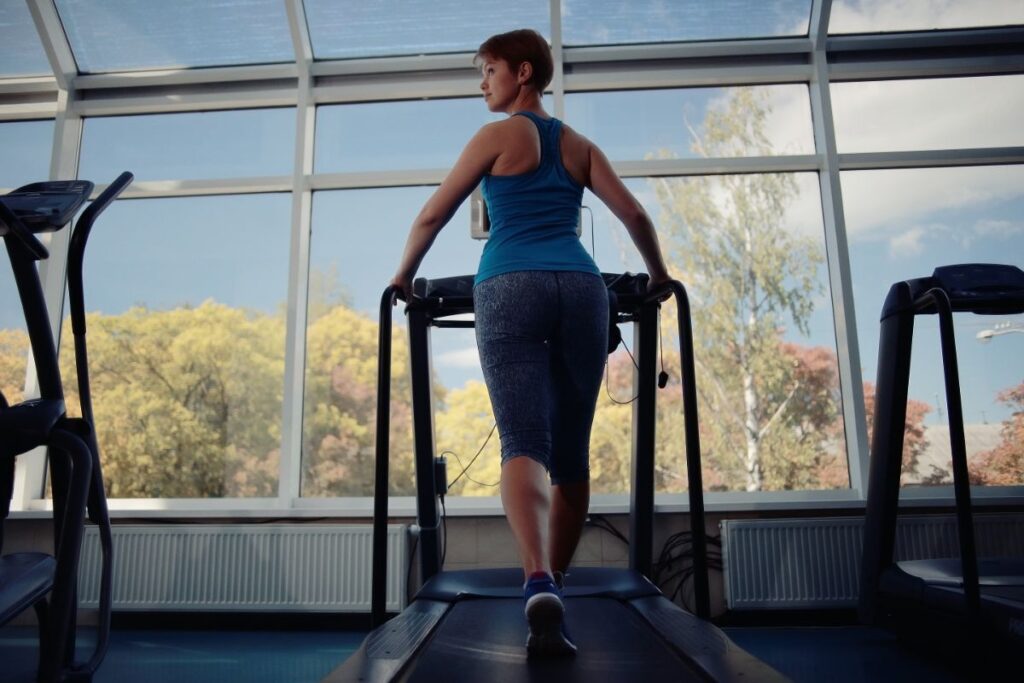
If you’re unsure which category you fit in, simply go for a run and visualize in which order your feet touch the ground. If you’ve spent a good portion of your life running, there’s a good chance you strike midfoot first, even if you naturally come down heel first when you walk. The more you strike with your heel, the more cushioning around it and the higher heel-to-toe drop you want from your shoes.
4. Heel-to-Toe Drop
Closely tied to our point about running technique is choosing your shoes for treadmill running based on their heel-to-toe drop. A heel-to-toe drop, sometimes called a shoe offset or simply “drop”, is the height difference between the heel and forefoot (toe area). Most often, it’s measured in millimeters (mm).
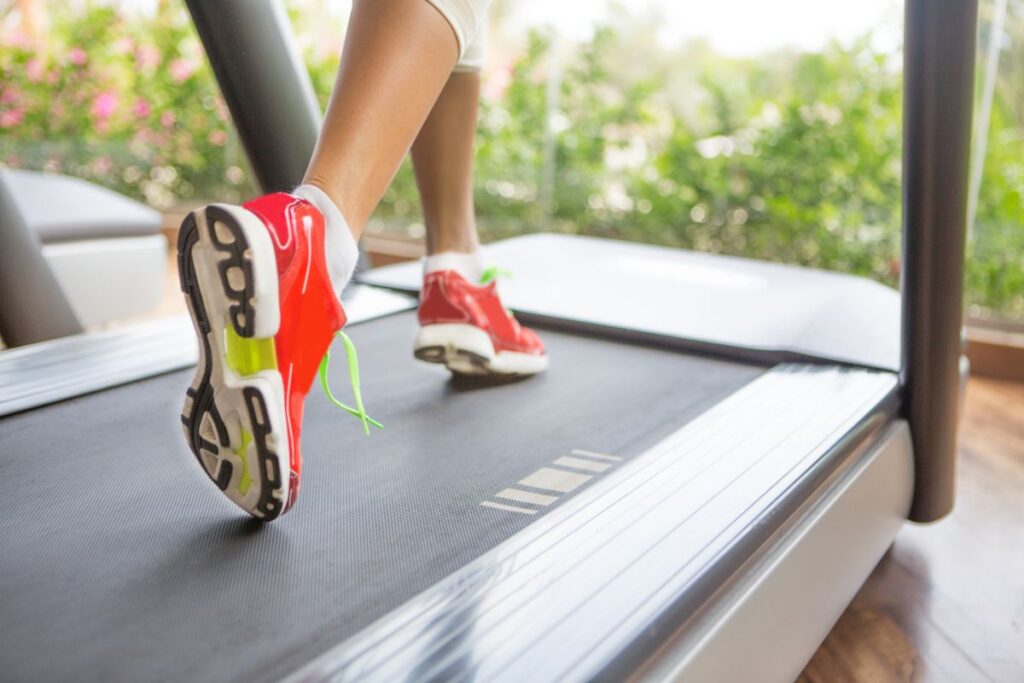
Running shoes have a “positive” heel-to-toe drop, meaning the heel is higher than the forefoot. Your running style will determine the best drop height for you. If you’re like most people and land heel-first, you’ll find a higher drop, i.e. 8+ mm, to be more comfortable. However, if you’re a midfoot striker, a smaller (or even no) drop may feel more natural.
5. Grip
Design-wise, sneakers for running on treadmill belts are purposely grippy. The outsole is the part of the sneaker that makes direct contact with the running surface. As we’ve seen in our top picks, the material used in outsoles is usually some form of rubber composite. When it meets with the (typically) rubber treadmill belt, there is significantly less friction and more traction.
Additionally, running shoe outsoles have tread patterns/grooves etched into them. These strategically placed elements reduce the surface area between the shoe and ground, and also trap air in between to create somewhat of a suction effect, increasing the feeling of sticking to the running surface.
6. Support
Running shoes provide all kinds of support depending on their target user. The midsole of shoes for running on treadmill belts typically has cushioning in the form of gel or foam that absorbs impact. Usually, there is some level of arch support incorporated in the center of the midsole to accommodate the three types of foot arches: low, medium, and high arch. Naturally, the higher your arch, the more support you should go for.
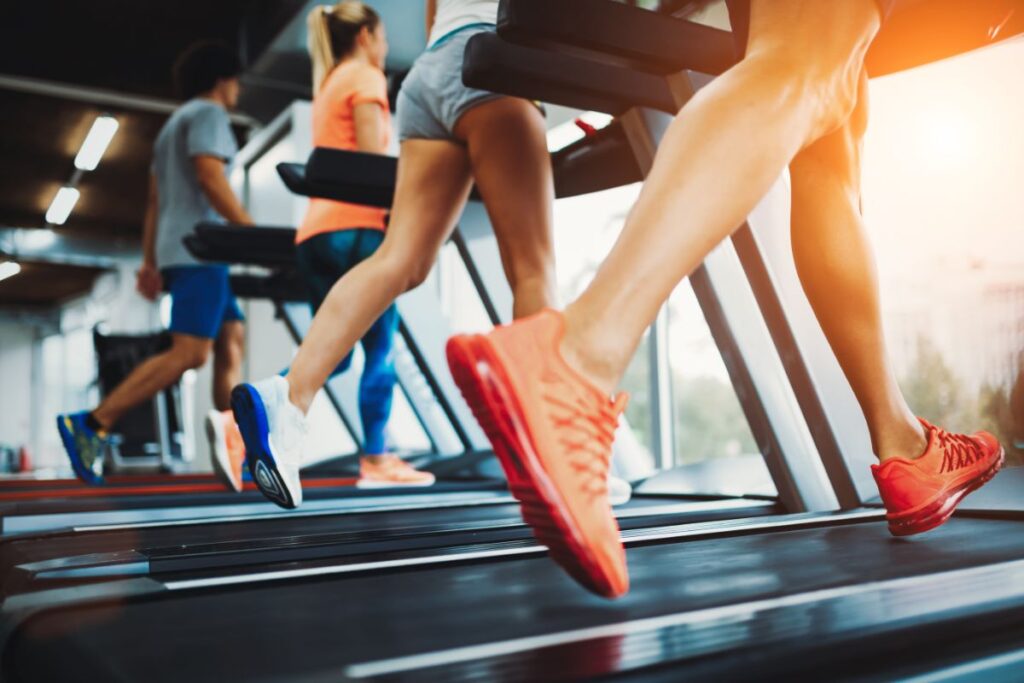
Toe boxes also play a role: most running shoes have wider toe boxes (compared to something like lifestyle shoes) to accommodate the natural foot spread that occurs when the runner strikes the ground. Additionally, a rigid heel counter and tight-fitting heel collar prevent your feet from slipping out of the shoe.
7. Material Quality
All of the shoes mentioned on the list go through regular commercial-quality testing, although it’s to be expected that more expensive pairs are of higher quality. The quality of the material can make a difference in everything from comfort to support.
A quality upper mesh will be more breathable, keeping the feet cool inside the shoe and thus reducing sweating. Quality midsoles will provide responsive cushioning, reducing the strain of the exercises on your legs and feet while absorbing and returning the energy investment through elasticity for a more energy-efficient run. Outsole quality such as the material (rubber) and tread pattern intricacy will reduce friction with the ground, preventing slipping and instability.
FAQ
Do Running Shoes Matter on a Treadmill?
The type of shoes you walk or run in, even if it’s on a treadmill in a controlled environment, make a noticeable difference in your workout quality. Professionally made running shoes are equipped with cushioning, aerodynamic contouring, arch support, light and breathable materials, etc., all of which add to a healthier, safer, and more efficient workout.
Do Running Shoes Last Longer on a Treadmill?
Yes, the controlled workout conditions, even and cushioned surface, lack of outside debris, and no weather factors to consider mean that indoor running shoes used on treadmills typically outlast shoes used for outdoor running.
How Often Should I Replace My Treadmill Shoes?
That would depend on the frequency of use, but also your running tendencies. Out-of-the-ordinary leg pain — for example, in the foot, ankle, shin, or knee — is a good indicator that the cushioning and supportive structure has given in and it’s time for a replacement. Pay attention to wear and tear around the outsole and don’t ignore cracks in the foam.
Running shoe brands like Nike or Reebok often have a recommended replacement cycle based on their in-house quality testing. This number usually falls between 300-600 miles, so keep it in mind.
Conclusion
Those were the 8 best treadmill running shoes to get in 2025. If you frequently run on treadmills or use other cardio machines, you’ll notice a big difference between a good pair of treadmill sneakers vs. regular athletic shoes. We particularly liked the Reebok Floatride Energy 5 for its versatility, a wide range of sizes and styles, and great value for money.
We’d like to hear from you as well. Do you have a home treadmill or do you use one at the gym? Which shoes have you used thus far and how happy were you with them? Leave a comment letting us know and remember to follow us on our social media for more fitness content.
Also read:
- Best Treadmill With TV Monitor
- How Many Calories Do You Burn on a Treadmill
- Best Under Desk Treadmill
- Best Folding Treadmill
- How to Use a Treadmill
References
- Andrew K. Buldt, Hylton B. Menz, “Incorrectly Fitted Footwear, Foot Pain and Foot Disorders: A Systematic Search and Narrative Review of the Literature,” Journal of Foot and Ankle Research 11, no. 43 (2018).
- Joel T. Fuller, Clint R. Bellenger, Dominic Thewlis, Margarita D. Tsiros, Jonathan D Buckley, “The Effect of Footwear on Running Performance and Running Economy in Distance Runners,” Sports Medicine 45, no. 3 (2015): 411-422.
- Joseph M. Molloy, Douglas S. Christie, Deydre S. Teyhen, Nancy S. Yeykal, Bradley S. Tragord, Matthew S. Neal, Eric S. Nelson, Thomas McPoil, “Effect of Running Shoe Type on the Distribution and Magnitude of Plantar Pressures in Individuals with Low- or High-Arched Feet,” Journal of the American Podiatric Medical Association 99, no. 4 (2009): 330-338.
- Mark E. Kasmer, Xue-cheng Liu, Kyle G. Roberts, Jason M. Valadao, “Foot-strike Pattern and Performance in a Marathon,” International Journal of Sports Physiology and Performance 8, no. 3 (2013): 286-292.
- Matthew I. Black, Sascha H. Kranen, Stefan Kadach, Anni Vanhatalo, Brad Winn, Emily M. Farina, Brett S. Kirby, Andrew M. Jones, “Highly Cushioned Shoes Improve Running Performance in Both the Absence and Presence of Muscle Damage,” Medicine & Science in Sports & Exercise (MSSE) 54, no. 4 (2022), 633-645.
- Miguel Ángel Melero-Lozano, Marta San-Antolín, Davinia Vicente-Campos, J.L. Chicharro, Ricardo Becerro-de-Bengoa-Vallejo, Marta Elena Losa-Iglesias, David Rodríguez-Sanz, César Calvo-Lobo, "Influence of Footwear Features on Oxygen Consumption and Running Economy: A Review," Applied Sciences 13, no. 1. (2023): 23.
- Stephanie Kvas, “How to Determine Your Foot Arch Type,” Mayo Clinic Health System, https://www.mayoclinichealthsystem.org/hometown-health/speaking-of-health/how-to-determine-foot-arch-type (accessed Oct. 13, 2023).
- Valencia Higuera, “Blisters on Feet: What You Need to Know,” Healthline, https://www.healthline.com/health/blisters-on-feet (accessed Oct. 13, 2023).
- Zoe Y. S. Chan, Ivan P. H. Au, Fannie O. Y. Lau, Eric C. K. Ching, Janet H. Zhang, Roy T. H. Cheung, “Does Maximalist Footwear Lower Impact Loading during Level Ground and Downhill Running?” European Journal of Sport Science 18, no. 4 (2018), 1083-1089.
Why Trust Us?
With over 20 years in Olympic Weightlifting, our team does its best to provide the audience with ultimate support and meet the needs and requirements of advanced athletes and professional lifters, as well as people who strive to open new opportunities and develop their physical capabilities with us.
All products we select are primarily approved and tested by the Olympic Weightlifting Champion Oleksii Torokhtiy. Under his guidance, we provide honest and reasonable assessments of the products we review by checking their characteristics, packaging, design, comfort and durability features, and general product rating. We select products from only high-quality and trusted sports brands, thus vouching for their quality.
The product testing process is described in more detail here
Author: Jason Li
Personal Coach, Functional Range Conditioning Mobility Specialist
Jason is an NYC personal training expert and National level Olympic Weightlifting Coach with over 10 years of experience training everyday clients to high levels of performance. He has trained everyone from youth (13 years old and under) to masters (60+ years old) to regional and national rankings for powerlifting, Olympic Weightlifting, Short distance (up to 200m) sprinting, discus & hammer throwing.
If you have any questions/suggestions/any other inquiries considering product reviews, you can reach out to us via email – [email protected]

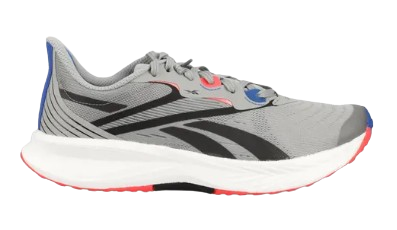
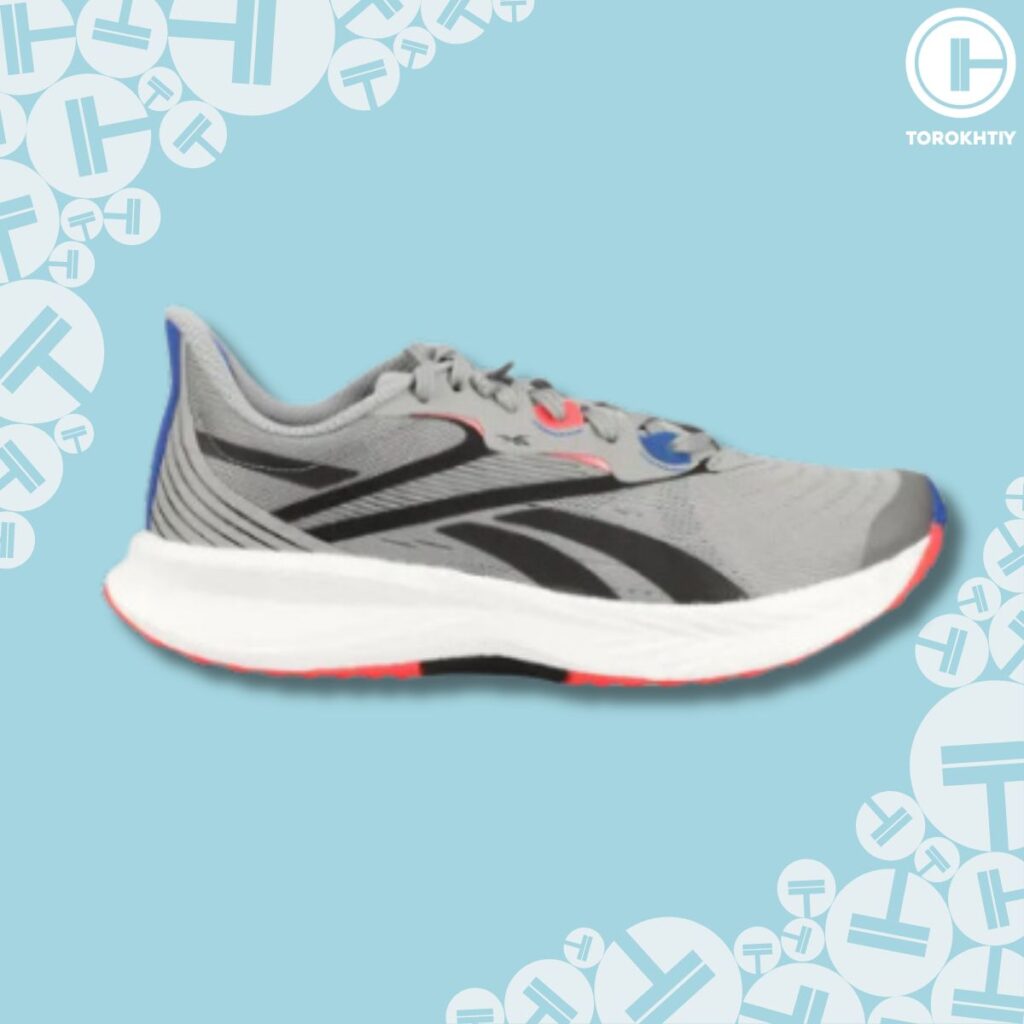
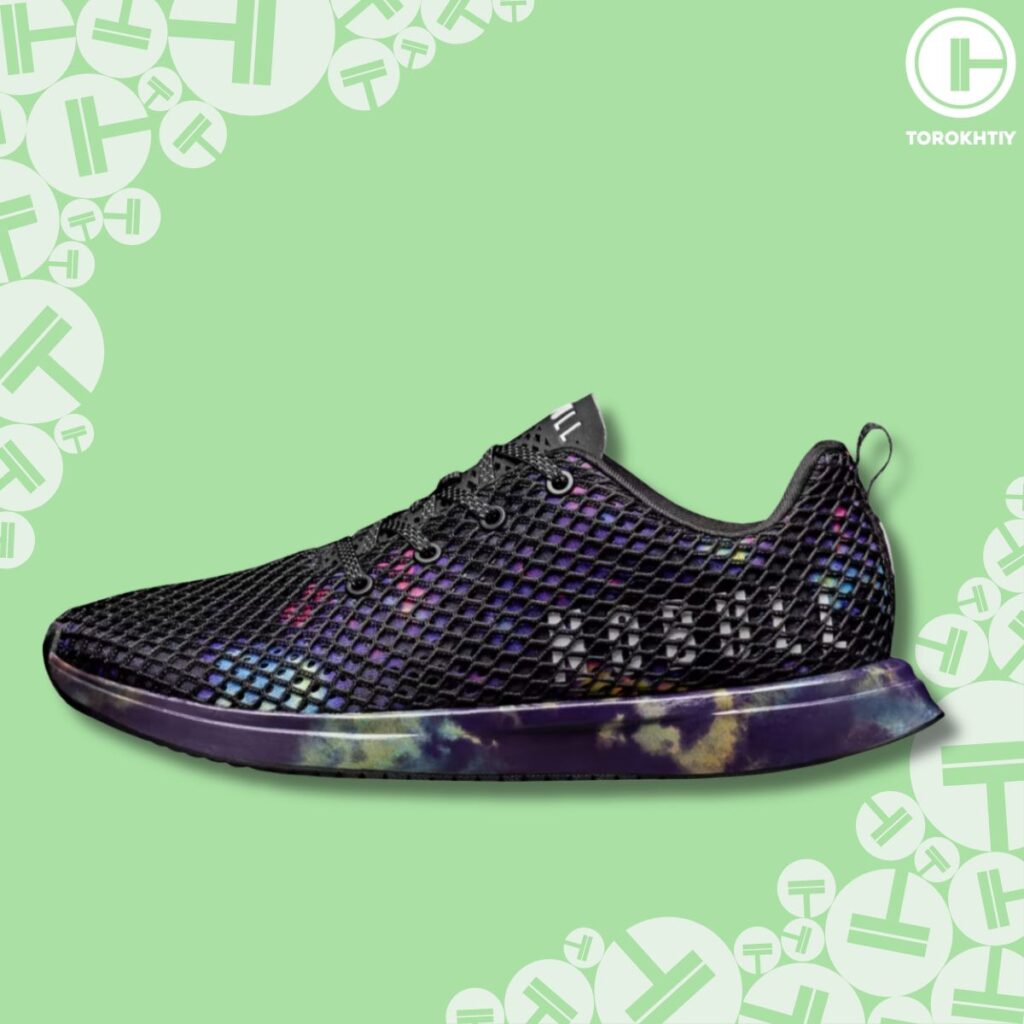
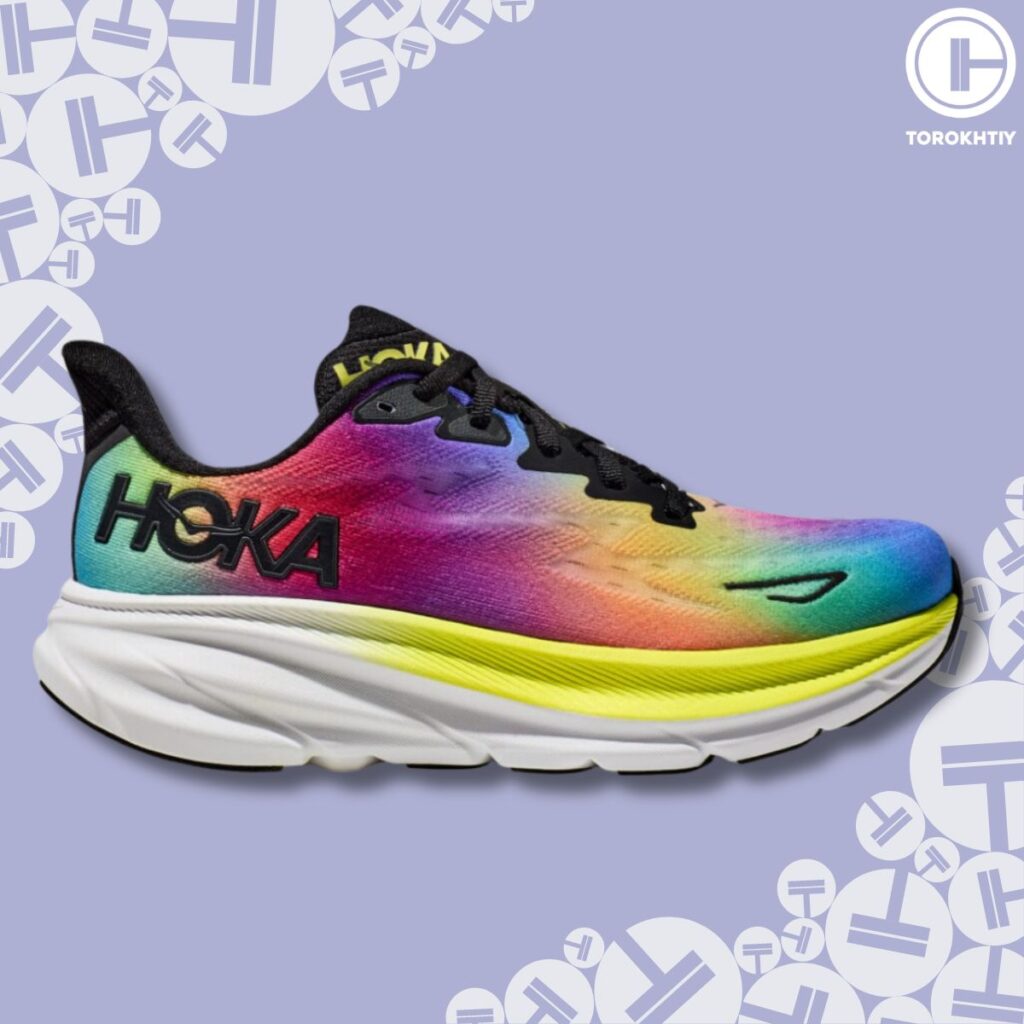
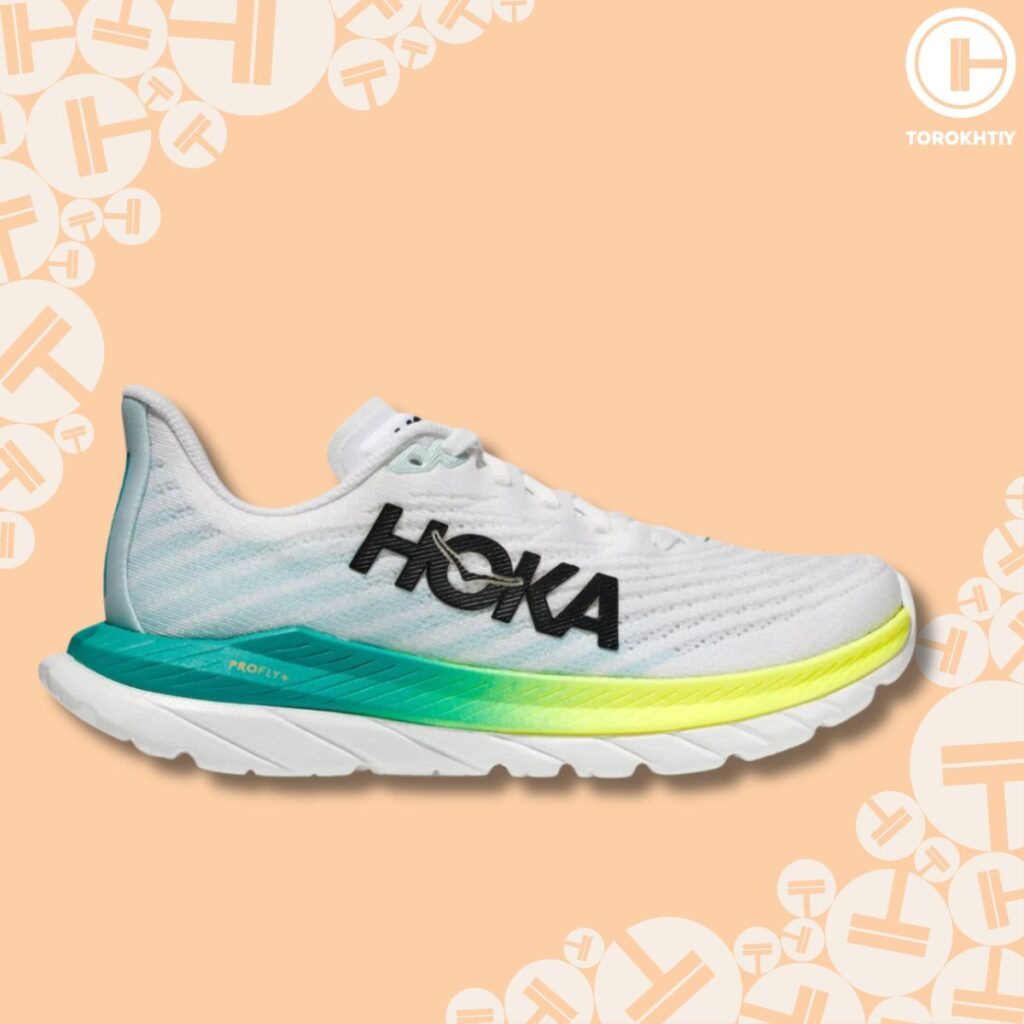
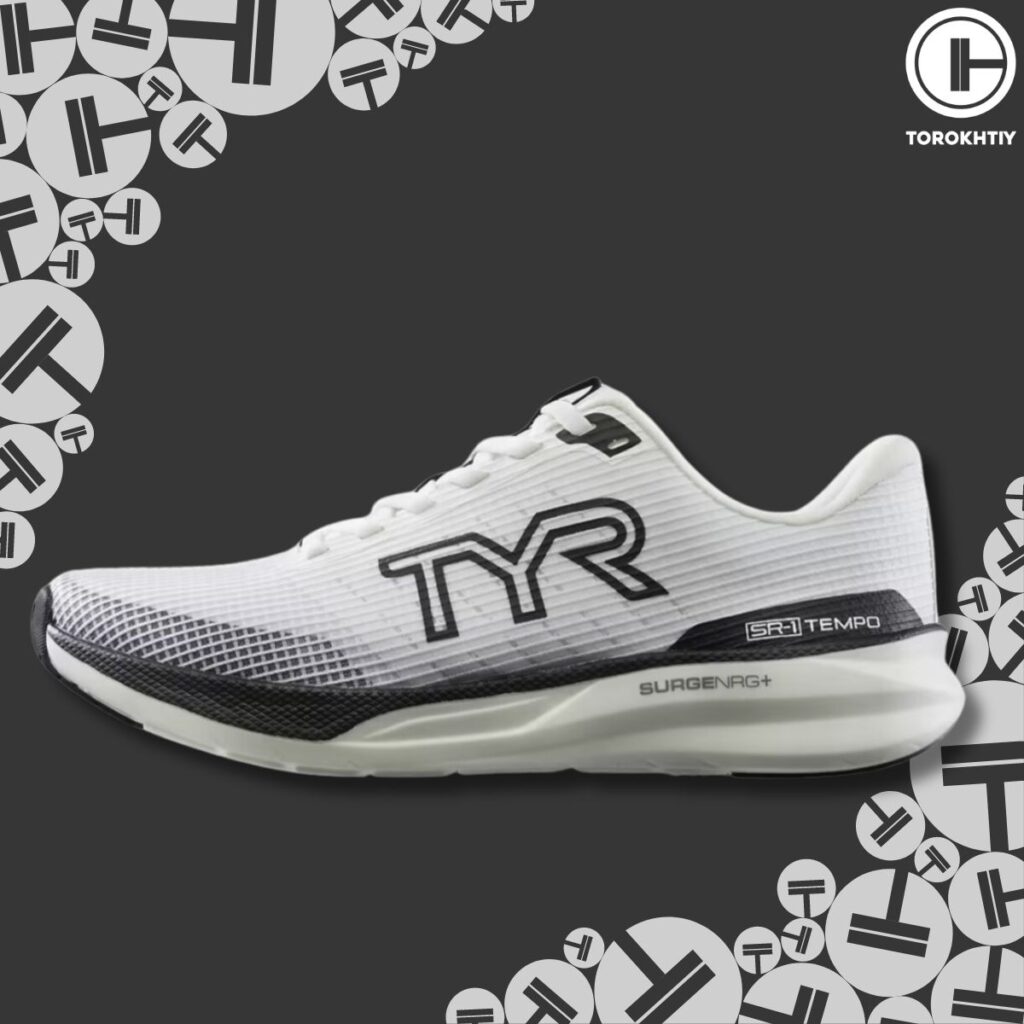
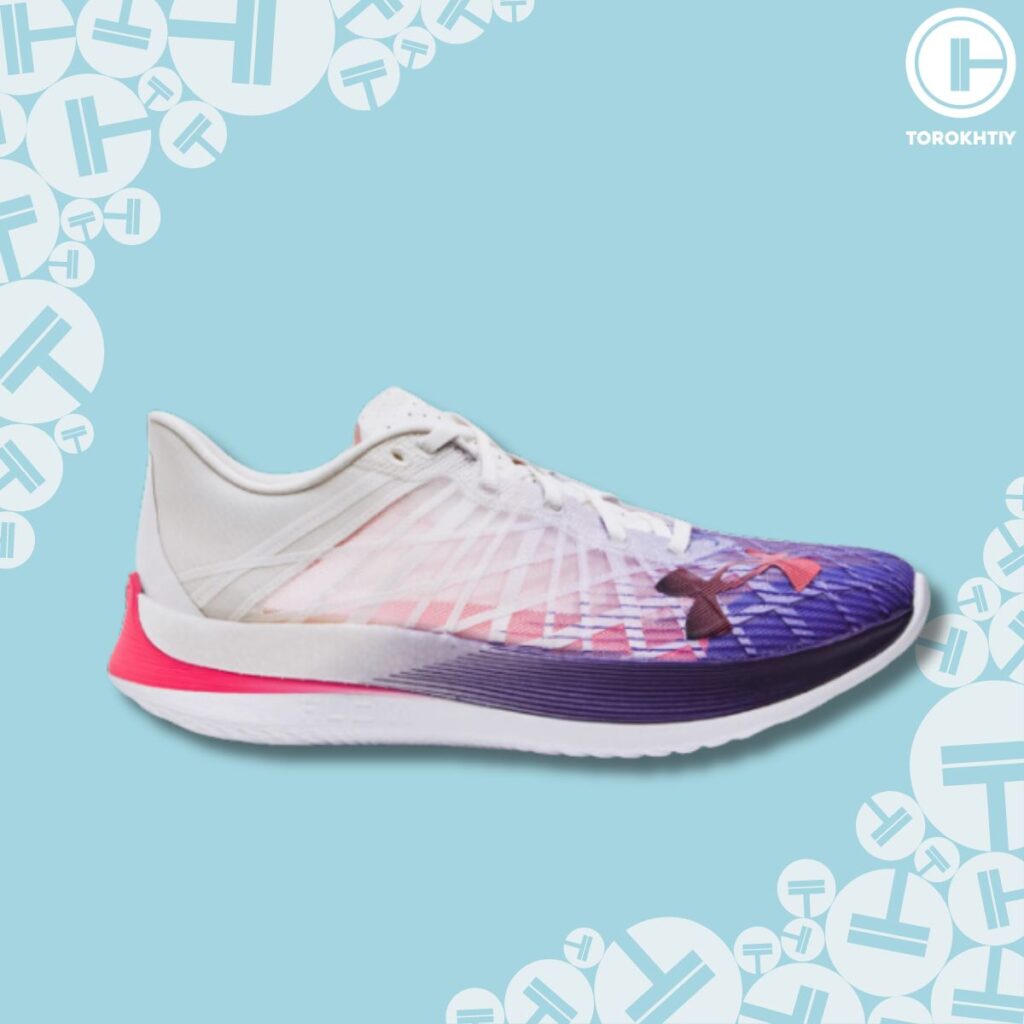
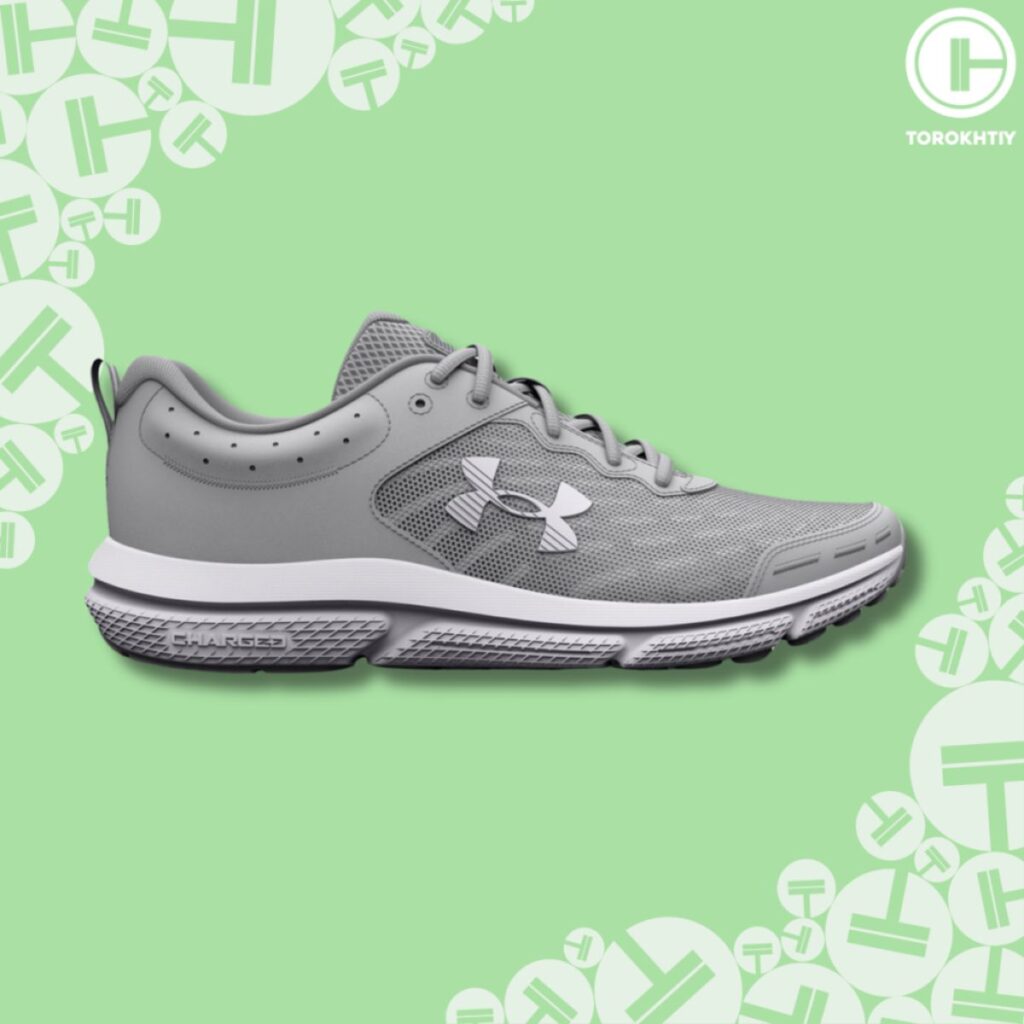
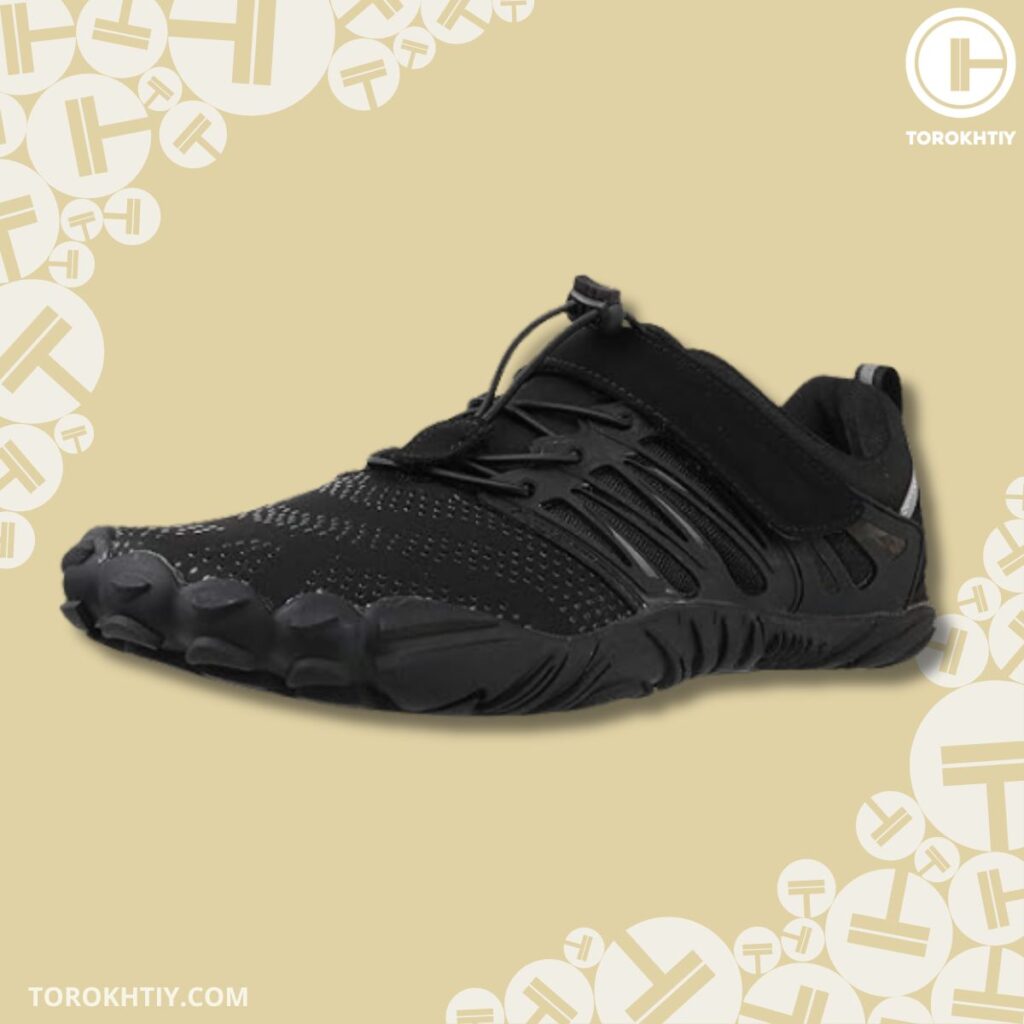


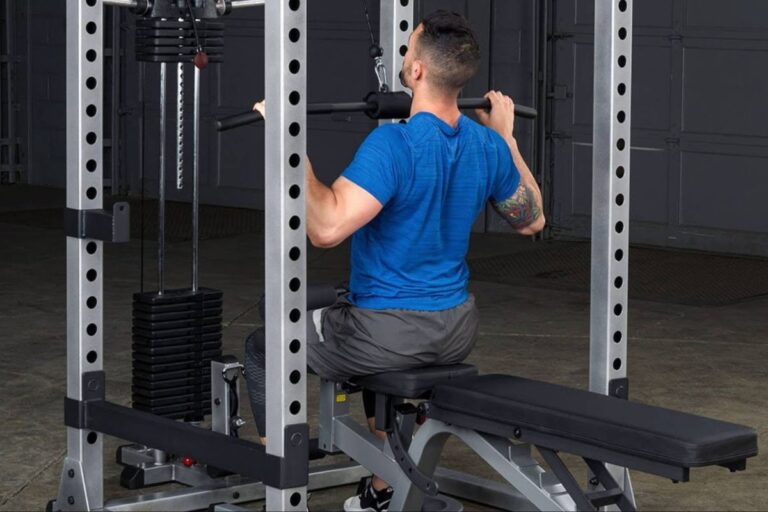
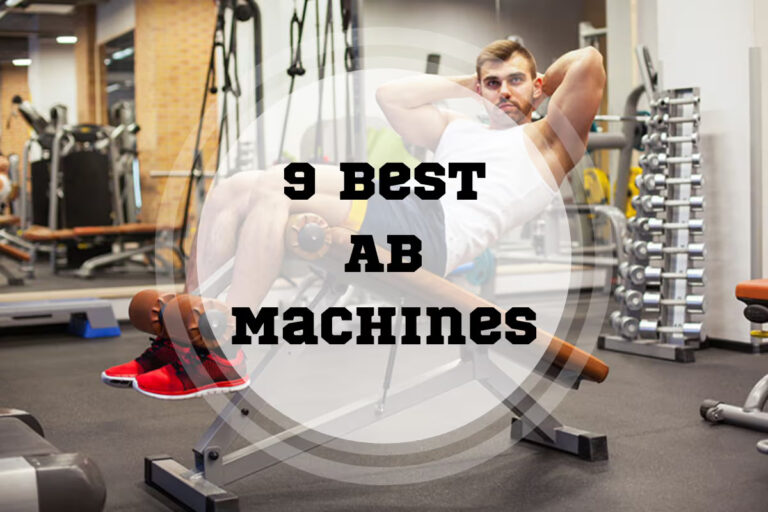
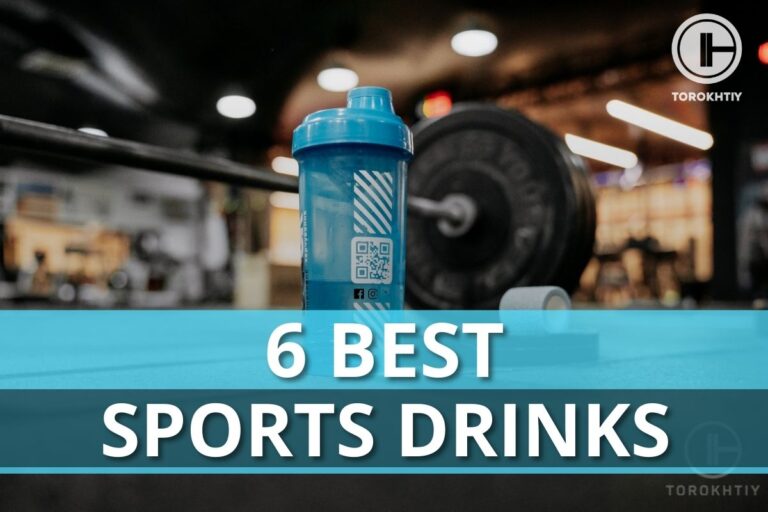
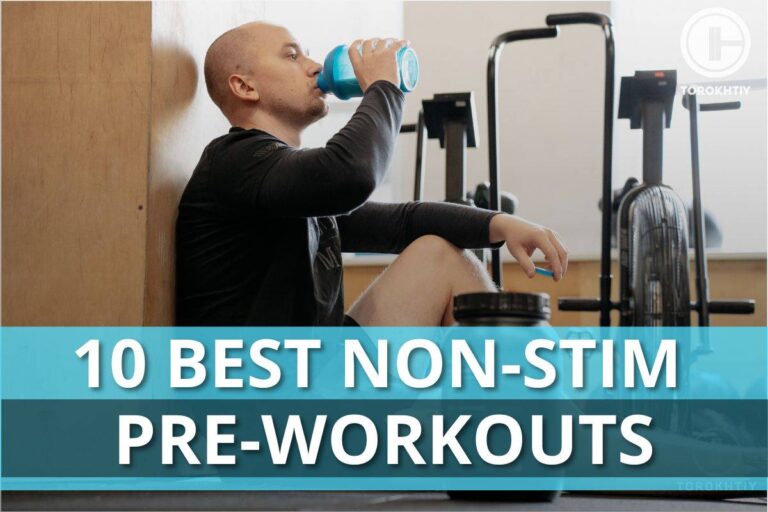
![5 Best Wall Mounted Dip Stations in [Year]](https://torwod.com/wp-content/uploads/2024/02/Best-Wall-Mounted-Dip-Stations-768x576.jpg)
